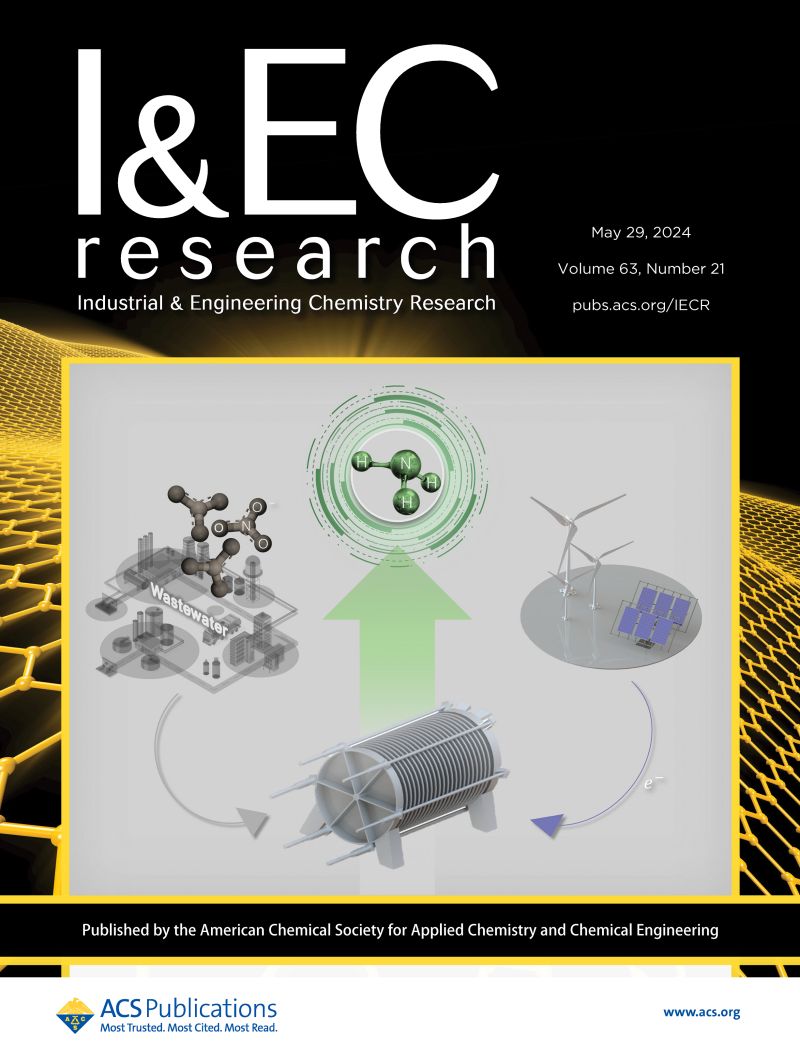2,6-二甲基苯酚氧化聚合制备分子量可控的无金属聚(2,6-二甲基-1,4-苯基氧化物
IF 3.8
3区 工程技术
Q2 ENGINEERING, CHEMICAL
引用次数: 0
摘要
尽管低分子量聚(2,6-二甲基-1,4-苯基氧化物)(LMW-PPO)的合成已被广泛研究,但制备具有高热稳定性和令人满意的介电性能的无金属 LMW-PPO 仍具有挑战性。本研究开发了一种利用非金属催化剂合成无金属 LMW-PPO 的新方法。在不使用 Cu(II) 催化剂的情况下,胺可以催化过氧化苯甲酰 (BPO) 在 CH3CN 中生成无金属的 LMW-PPO(Mn 在 4.0 × 103-6.0 × 103),N,N-二甲基对甲苯胺(DMT)在 PPO 产率(68.4%)方面表现出较高的反应活性,而 3,3′,5,5′-四甲基-4,4'二吩醌(DPQ)产率(2.6 × 10-2%)和 PDI(1.50)较低。所得 PPO 的介电常数(Dk = 1.96)和介电损耗因子(Df = 1.57 × 10-3)较低,这表明胺类化合物更适合合成具有优异介电性能的无金属 LMW-PPO。同时,通过调节催化剂的含量或在 CH3CN 中混合适当含量的甲苯,可以成功地调节 PPO 的 Mn 值;随着 Mn 值从 1.7 × 104 降至 4.1 × 103,Tg 值也从 209.3 降至 170.8 ℃,这表明在保持高热稳定性(Td5% = 420.8-434.2 ℃)的同时,LMW-PPO 的可加工性也得到了改善。密度泛函理论(DFT)计算进一步揭示了 DMT 从 BPO 中形成氧化自由基,然后引发 DMP 中的 H-萃取,形成 DMP 自由基。生成的 DMP 自由基随后聚合成 LMW-PPO。这项研究为利用无金属催化剂合成高纯度 LMW-PPO 提供了新的思路。本文章由计算机程序翻译,如有差异,请以英文原文为准。

Oxidative Polymerization of 2,6-Dimethyl-phenol to Metal-free Poly(2,6-dimethyl-1,4-phenylene oxide) with Controllable Molecular Weight
Although the synthesis of low-molecular-weight poly(2,6-dimethyl-1,4-phenylene oxide) (LMW-PPO) has been widely studied, preparing metal-free LMW-PPO with high thermal stability and satisfactory dielectric properties is still challenging. In this study, a new method for synthesizing metal-free LMW-PPO by nonmetal catalysts has been developed. In the absence of Cu(II) catalysts, amines can catalyze benzoyl peroxide (BPO) to produce metal-free LMW-PPO in CH3CN (Mn in the range of 4.0 × 103–6.0 × 103), and N,N-dimethyl-p-toluidine (DMT) exhibits high reactivity in the yield of PPO (68.4%) with a low 3,3′,5,5′-tetramethyl-4,4’diphenoquinone (DPQ) yield (2.6 × 10–2%) and PDI (1.50). The low dielectric constant (Dk = 1.96) and low dielectric loss factor (Df = 1.57 × 10–3) of the obtained PPO indicate that amines are more appropriate for the synthesis of metal-free LMW-PPO with superior dielectric properties. Meanwhile, the Mn values of PPO can be successfully mediated by regulating the contents of the catalyst or mixing appropriate contents of toluene in CH3CN, and the decreased Tg values from 209.3 to 170.8 °C with decreasing Mn values from 1.7 × 104 to 4.1 × 103 indicate the improved processability of the LMW-PPO while maintaining high thermal stability (Td5% = 420.8–434.2 °C). Density functional theory (DFT) calculations further reveal the formation of oxidizing radicals from BPO by DMT, which then initiate H-abstraction from DMP to form the DMP radical. The produced DMP radicals then polymerize to LMW-PPO. This study provides new insight into synthesizing highly qualified LMW-PPO by metal-free catalysts.
求助全文
通过发布文献求助,成功后即可免费获取论文全文。
去求助
来源期刊

Industrial & Engineering Chemistry Research
工程技术-工程:化工
CiteScore
7.40
自引率
7.10%
发文量
1467
审稿时长
2.8 months
期刊介绍:
ndustrial & Engineering Chemistry, with variations in title and format, has been published since 1909 by the American Chemical Society. Industrial & Engineering Chemistry Research is a weekly publication that reports industrial and academic research in the broad fields of applied chemistry and chemical engineering with special focus on fundamentals, processes, and products.
 求助内容:
求助内容: 应助结果提醒方式:
应助结果提醒方式:


